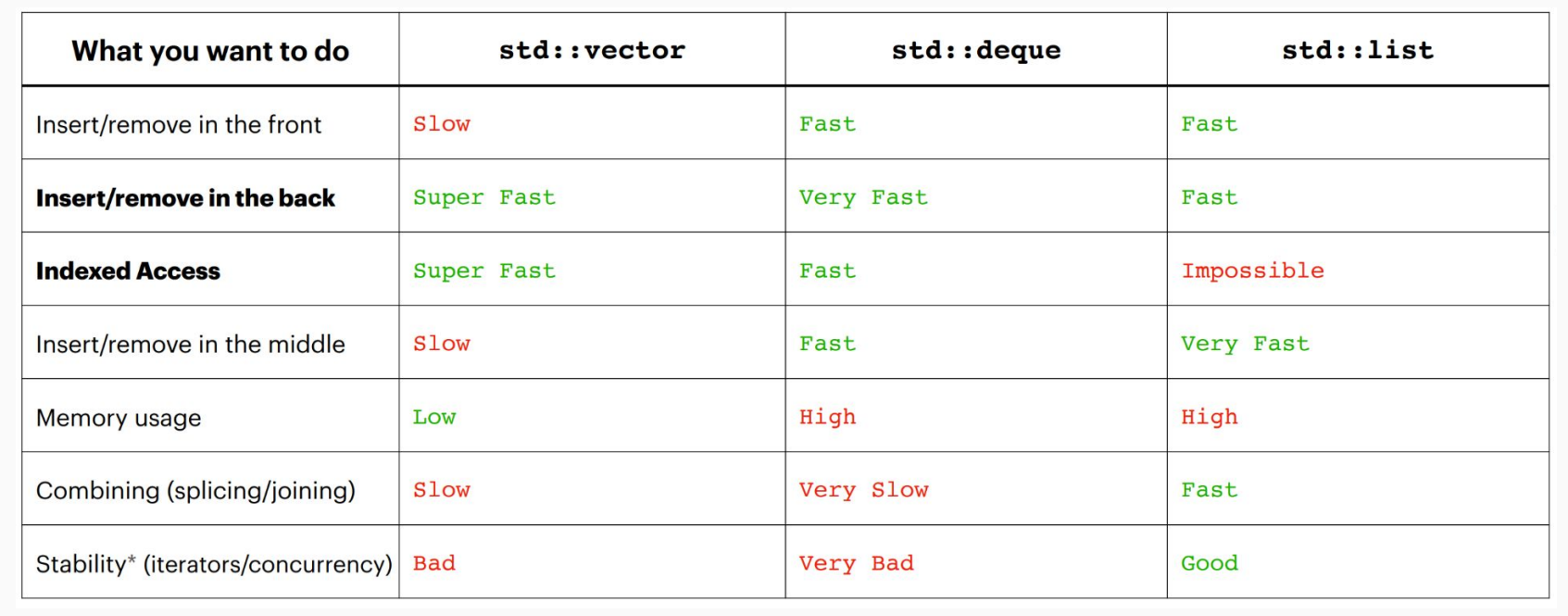Containers¶
Definition: Container is an object that allows us to collect other objects together and interact with them in some way.
Why containers?¶
- Organization: Related data packed together
- Standardization: Common features are expected and implemented.
- Abstraction: Complex idea made easier to utilize by clients
Example for "standardization"¶
Containers export some standard, basic functionality.
- Allow you to store multiple objects (of the same type)
- Allow access to this collection in some ways
-
Maybe even allow iterations!
-
Maybe allow deletion or editing!
Safety VS Speed¶
Containers in C++ STL don't check boundaries, whereas those in Python check.
Along with other checks, Python is much slower than C++ (even if both compiled).
C++ Design Philosophy¶
- Only provide the checks/safety nets that are necessary
- i.e. minimal safety
- The programmer knows best!
- i.e. programmers DIY
So, you should check it yourself when needed. That is, make sure what you are doing is allowed is your job.
Two Types of Containers¶
Sequential containers
- Containers can be accessed sequentially
- Anything with an inherent order goes there
Associative containers
- Containers that don’t necessarily have a sequential order
- More easily searched
- Maps and sets go here!
Sequential containers¶
Let's take std::vector, std::deque and std::list as examples.
std::vector uses continuous memories, std::list uses pointers and random memories, whereas std::deque use continuous memories that store the addresses of blocks of continuous memory (not circular vector!!!).

Tips:
- Sequence containers are for when you need to enforce some order on your information!
std::vectorcan be used for almost anything.std::dequewhen you need to insert at both ends.std::listwhen joining/working with multiple lists (very rare)
Associative containers¶
Let's take std::map/set and std::unordered_map/set as examples.
To use std::map/set<Key(, Value)>, the Key class must define the comparison operator.
To use std::unordered_map/set<Key(, Value)>, the Key class must define the hash function.
Tips:
- Unordered containers are faster, but can be difficult to get to work with nested containers/collections.
- If using complicated data types/unfamiliar with hash functions, use an ordered container
Container Adaptors¶
Container adaptors are “wrappers” to existing containers!
- Wrappers modify the interface to sequence containers and change what the client is allowed to do/how they can interact with the container.
Example: std::queue¶
The definition for std::queue is
So, without specification, std::queue use std::deque as its underlying container.
Although std::queue is implemented by std::deque, the client can only push and pop, and can't push_front or pop_back. Thus, std::queue indeed changes what the client is allowed to do.
But, Container can't be arbitrary. It must at least support
- empty
- size
- front
- back
- push_back
- pop_front
So, std::list can be a suitable container for std::queue, e.g. queue<int, list<int> > q
And, the concept of container adapters is new layer of abstraction again!
- Commonly used data structures made easy for the client to use
- e.g.
priority_queueis based onvector. And implement an ordered heap is not a trivial job. - Can use different backing containers based on use type
- e.g.
listcan also be used to implementqueue